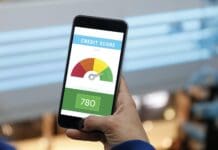According to new data from Mastercard SpendingPulse, holiday shopping sales have grown at the fastest pace in 17 years by rising by 8.5%, even with the many problems and issues businesses have faced in the past few months. While holiday sales have risen quickly when compared to what was recorded last year, it appears that most increases came from the sale of jewelry and clothing.
Mastercard SpendingPulse follows how people use both credit and debit cards. Previously, Mastercard SpendingPulse forecasted that holiday shopping sales would rise by about 8.8% this year, when compared to last year.
While clothing and jewelry sales increased quite a bit when compared to the previous year, electronic sales and even online sales increased when compared to both 2020 and 2019 recordings. Department stores also saw an increase in traffic and sales during the holiday season.
This latest news comes after some analysts were worried that holiday sales would be affected because of the new Omicron variant of the coronavirus. Right after Thanksgiving, news broke that a new variant of the coronavirus had quickly been spreading around the world. While the variant has reached the United States and caused cases to surge, it doesn’t appear as if the variant has caused too much negative impact on how people spend money.
This could be because data seems to suggest that this variant is less deadly, or leaves you less sickly, than the Delta variant. Some data does dispute this idea, though. There are some signs that point to Americans deciding to not purchase items in-store, possibly because of the highly contagious Omicron variant. For example, online sales increased by 11% when compared to last year.
This data will likely be clarified when the National Retail Federation releases their data on holiday sales, in line with the data the Commerce Department releases.
The strong holiday shopping season started quite early this year after analysts warned both businesses and consumers that the global supply chain problems could cause inventory shortages and empty shelves in stores, especially for highly desired items. After hearing this news, many consumers started to buy for the holiday season very early in October to ensure that they get the gifts and products they want. This helped fuel the holiday shopping season earlier than expected.
While some businesses did struggle with a low inventory, many of the bigger retailers (such as Walmart and Target) expressed that their inventory was fine and that they would have no issue with empty shelves in their stores, helping to cause anxiety consumers may have been feeling.
While the Omicron variant hasn’t seemed to negatively impact how consumers spent money during the holidays, the variant still caused major stress for many in the country, and around the world, as hundreds of flights were canceled on Christmas Eve because of flight crew infections.
Now, as economists look towards the future, analysts are looking at how things like the coronavirus, global supply chain, and consistent labor shortage may continue to impact how Americans spend money and help the economy grow.













